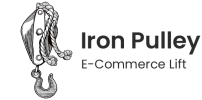The main purpose of web analytics is to increase the overlap of user expectation with user experience. That’s where conversion lives.
I’ve found it helpful to break analytics down into three basic levels:
1. Diagnostics – Is this thing on? Is anything broken? Is it doing what we expect it to?
2. Directional – What does this time period look like compared to other time periods?
3. Discovery – What are the drivers? What is behaving differently? Why is it behaving this way?
Diagnostics are the most important, but take the least effort. Think about the scene in Sling Blade when he checks to make sure the mower has gas first before trying to repair it.
Directional is how you can quickly tell how you’re doing. Think about the Wong–Baker Faces pain rating scale and hope for more smiley faces.
Discovery is where you figure out how to scale your business. It’s where you’ll spend most of your time and effort. This is where you can occasionally make that “Chef’s kiss” noise/gesture when you capture some eureka moments.
If you keep the purpose as your guiding light; the overlap of expectation and experience, it will be easier to discover both friction and opportunity.
Does the ad (creative, audience, placement) do a good job of setting the expectation?
Does the landing page (product, value proposition, offer) do a good job of meeting or exceeding the expectation?
Does the site perform (speed, navigation, search, checkout) to the standard?
The biggest barriers to conversion are always the disconnects between expectation and experience.

